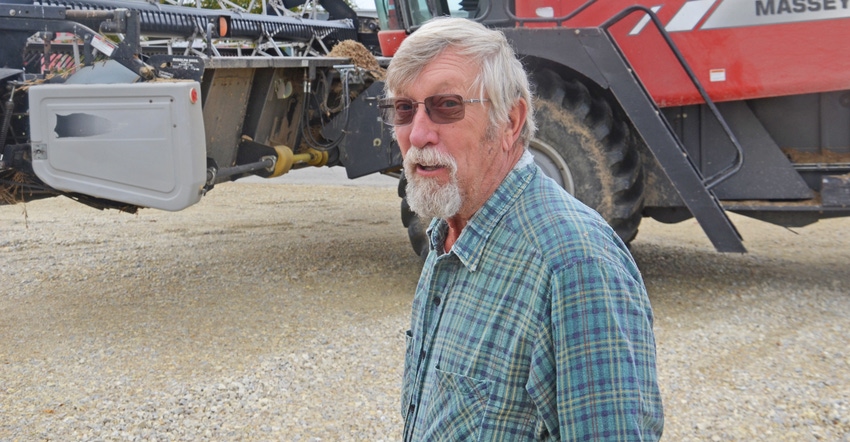November 7, 2019

Jim Zimmerman invited me aboard his Massey-Ferguson combine as he prepared to harvest a soybean plot. This on-farm trial compared various soybean populations. He planted and harvested the replicated trial with the help of Larry Temple. Just retired as the Extension ag educator in Jay County, Ind., Temple returned to help harvest the trial.
The combine was equipped with a yield monitor and display screen showing real-time information on various functions. Jim says the plot was worth the effort — prior results gave him confidence to throttle back on soybean seeding rates.
Since he can change seeding rate on his White split-row planter simply by pushing buttons, it doesn’t take much extra time. There’s no longer a need to get out of the tractor with wrenches and move sprockets to change rates.
When I commented on today’s technology, Jim shared insights that might be as valuable as what he will learn from this year’s soybean trial.
Technology advances
“My grandfather was born at the turn of the century and passed away in the late ’70s,” Jim recalled. “I was amazed at the changes he saw in technology farming here.
“He started out farming with horses. Grandpa remembered when they began using tractors and working in a threshing ring. He was still helping when we bought tractors with cabs.
“I remember telling him how amazing it was that he witnessed all these changes in technology.”
By now I was curious. What did his grandfather think about these changes?
“He told me, ‘Jim, the changes in technology I’ve seen in farming are nothing compared to what you’re going to see in your lifetime,’” Jim said. “And he was right.”
The proof was inside the combine cab and outside, too. On one side of the field was a modern confinement hog barn where Jim’s son Darren raises hogs on contract. In front of us across the road was a layer barn where Jim and his brother Ron produce eggs on contract. Their grandfather lived through days when people many farrowed hogs in one-sow huts and farm wives gathered eggs by hand.
History repeats
“I can say the same thing now,” Jim said. “I can’t imagine what changes my grandkids will see.”
About that time, Jim looked out the combine window, staring at a UAV about 150 feet south of the combine. “That’s Darren’s ‘toy,’” he quipped. “He loves playing with drones.” All of it isn’t play, though, Jim noted. Darren provides aerial images of fields during the season.
It was time for the grain cart, and Jim raised Darren on the radio. In his grandpa’s earlier days, there was no radio, no grain cart — not even a combine at first. Today, there is all this, plus drones.
How long before Jim doesn’t call Darren, but instead, simply pushes buttons? A tractor hooked to a grain cart will fire up, head his way and pull upside so he can unload on the go. There won’t be a driver in the tractor.
That capability exists today, although the technology is in its infancy. Likely Darren will have access tp it, and for sure Jim’s grandkids will. What other technologies will Darren’s kids see?
Jim’s grandfather had it right more than 50 years ago: “What I’ve seen is nothing compared to what you’re going to see in your lifetime.”
Comments? Email [email protected].
You May Also Like




